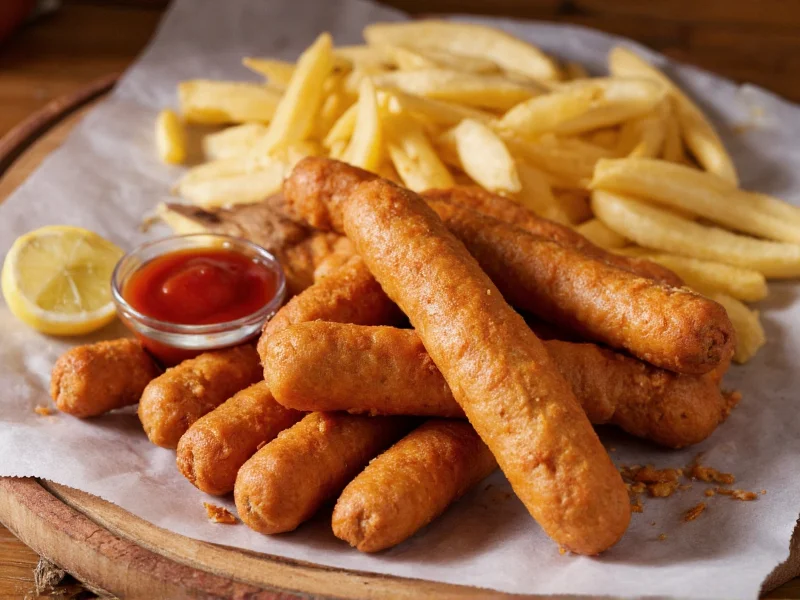Frying sausage remains one of the most popular cooking methods for this versatile protein. Unlike boiling or grilling, pan-frying creates a delicious caramelized crust while locking in juices. This comprehensive guide covers everything you need to know about achieving perfectly fried sausage every time, whether you're preparing breakfast links or dinner-worthy bratwurst.
Best Sausage Varieties for Frying
Not all sausages respond equally well to frying. Fresh, uncooked varieties with higher fat content typically produce the best results. Pre-cooked sausages can become dry when fried, though they work well for quick reheating.
| Sausage Type | Fat Content | Frying Time | Special Considerations |
|---|---|---|---|
| Bratwurst | 20-25% | 12-15 minutes | Prick casing to prevent bursting |
| Italian Sausage | 25-30% | 10-12 minutes | Remove casing for crumbled preparation |
| Kielbasa | 15-20% | 8-10 minutes | Best when sliced diagonally |
| Breakfast Links | 20-25% | 6-8 minutes | Turn frequently for even browning |
Essential Equipment and Preparation
Before you start frying sausage, gather these essentials:
- Heavy-bottomed skillet (cast iron works exceptionally well for fried sausage)
- Meat thermometer (critical for food safety)
- Tongs for turning sausages
- Paper towels for draining excess grease
- Sharp knife for testing doneness if thermometer unavailable
Proper preparation makes all the difference in how to fry sausage without burning. Always bring sausages to room temperature for 20-30 minutes before cooking. This ensures even cooking throughout. For fresh sausages with natural casings, lightly prick them in several places with a fork to prevent bursting during cooking.
Step-by-Step Frying Instructions
Follow these steps for perfectly fried sausage every time:
- Heat 1-2 tablespoons of oil in a skillet over medium heat (not high heat, which causes burning)
- Add sausages without overcrowding the pan (work in batches if necessary)
- Cook for 3-4 minutes until golden brown on first side
- Turn sausages using tongs and cook another 3-4 minutes
- Continue turning every 2-3 minutes until evenly browned on all sides
- Check internal temperature reaches 160°F (71°C) for pork sausages
- Remove from heat and let rest 3-5 minutes before serving
The optimal oil temperature for frying sausage ranges between 325-350°F (163-177°C). If you don't have a thermometer, test with a small piece of bread—it should sizzle immediately but not burn within 30 seconds. When learning how long to fry sausage, remember that thickness matters more than type. Thicker sausages require lower heat and longer cooking times to ensure the center cooks without burning the exterior.
Avoiding Common Frying Mistakes
Many home cooks encounter issues when preparing fried sausage. Here's how to avoid the most frequent problems:
- Burning the exterior: Use medium heat rather than high heat. If sausages brown too quickly, reduce heat and add a tablespoon of water to the pan, then cover to steam for 2-3 minutes before finishing the browning.
- Uneven cooking: Rotate sausages frequently and ensure consistent thickness by choosing uniform sausages. For thicker varieties, consider par-cooking in simmering water for 5 minutes before frying.
- Dry, tough results: Don't overcook. Remove sausages from heat when they reach 155°F (68°C) as they'll continue cooking from residual heat.
- Sticking to the pan: Ensure the pan is properly preheated and use sufficient oil. Cast iron requires proper seasoning for best results with fried sausage.
Serving Suggestions and Recipe Ideas
Fried sausage serves as a versatile protein that pairs well with numerous sides and sauces. For breakfast, serve fried breakfast links with eggs and hash browns. Dinner options include:
- Bratwurst with sauerkraut, mustard, and rye bread
- Italian sausage with peppers and onions over pasta
- Kielbasa with roasted potatoes and cabbage
- Crumbled breakfast sausage in breakfast burritos or on pizza
For creative twists on how to cook sausage in a pan, try adding aromatics like garlic, shallots, or fresh herbs to the oil during the last few minutes of cooking. Deglaze the pan with beer, apple cider, or broth to create a quick pan sauce that complements the fried sausage perfectly.
Food Safety Considerations
Proper food handling remains essential when preparing fried sausage. Always separate raw sausages from other foods to prevent cross-contamination. Wash hands, utensils, and surfaces thoroughly after contact with raw meat. Never place cooked sausages back on plates that held raw meat.
The USDA recommends cooking pork sausages to an internal temperature of 160°F (71°C). For poultry sausages, the safe temperature is 165°F (74°C). When determining how to know when sausage is done frying, rely on a meat thermometer rather than color alone, as some sausages contain nitrites that maintain a pink color even when fully cooked.











 浙公网安备
33010002000092号
浙公网安备
33010002000092号 浙B2-20120091-4
浙B2-20120091-4